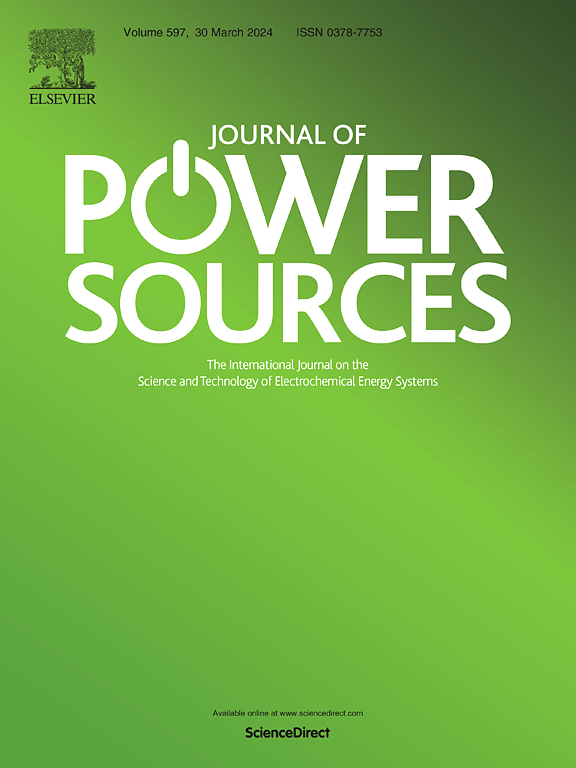In situ formation of a dual-function interlayer for enhanced cycling stability in solid state lithium battery
IF 8.1
2区 工程技术
Q1 CHEMISTRY, PHYSICAL
引用次数: 0
Abstract
Garnet-type LLZO is a promising solid electrolyte for solid-state lithium batteries as its superior performance. However, the mismatch in lithium-ion migration at the Li/LLZO interface, and rapid electron migration within LLZO, facilitates the growth of lithium dendrites. Herein, an interlayer consisted of multiphase metal sulfides (ZnS, In2S3 and Li2S) is synthesized by in-situ reaction between a ZnIn2S4 (ZIS) modification layer on LLZO and lithium anode. ZnS promote lithium ion migration at the interface, and In2S3 and Li2S prevent electron leakage from the anode, effectively inhibiting the formation of lithium dendrites. Benefiting from this dual-function interlayer design, the symmetrical lithium battery achieve a low interfacial impedance of 2.5 Ω cm2, a high critical current density of 1.6 mA cm−2 at 25 °C and 3.4 mA cm−2 at 60 °C, and excellent cycling stability over 3000 h at 0.3 mA cm−2 (25 °C) and 1000 h at 1 mA cm−2 (60 °C). Furthermore, the LiFePO4/ZIS-LLZTO/Li battery presents a high discharge capacity of 129.32 mAh·g−1 at 1 C, with 80 % capacity retention after 600 cycles. This work lays a foundation for developing garnet-based solid-state batteries with enhanced long-term cycling performance.
求助全文
约1分钟内获得全文
求助全文
来源期刊

Journal of Power Sources
工程技术-电化学
CiteScore
16.40
自引率
6.50%
发文量
1249
审稿时长
36 days
期刊介绍:
The Journal of Power Sources is a publication catering to researchers and technologists interested in various aspects of the science, technology, and applications of electrochemical power sources. It covers original research and reviews on primary and secondary batteries, fuel cells, supercapacitors, and photo-electrochemical cells.
Topics considered include the research, development and applications of nanomaterials and novel componentry for these devices. Examples of applications of these electrochemical power sources include:
• Portable electronics
• Electric and Hybrid Electric Vehicles
• Uninterruptible Power Supply (UPS) systems
• Storage of renewable energy
• Satellites and deep space probes
• Boats and ships, drones and aircrafts
• Wearable energy storage systems
 求助内容:
求助内容: 应助结果提醒方式:
应助结果提醒方式:


